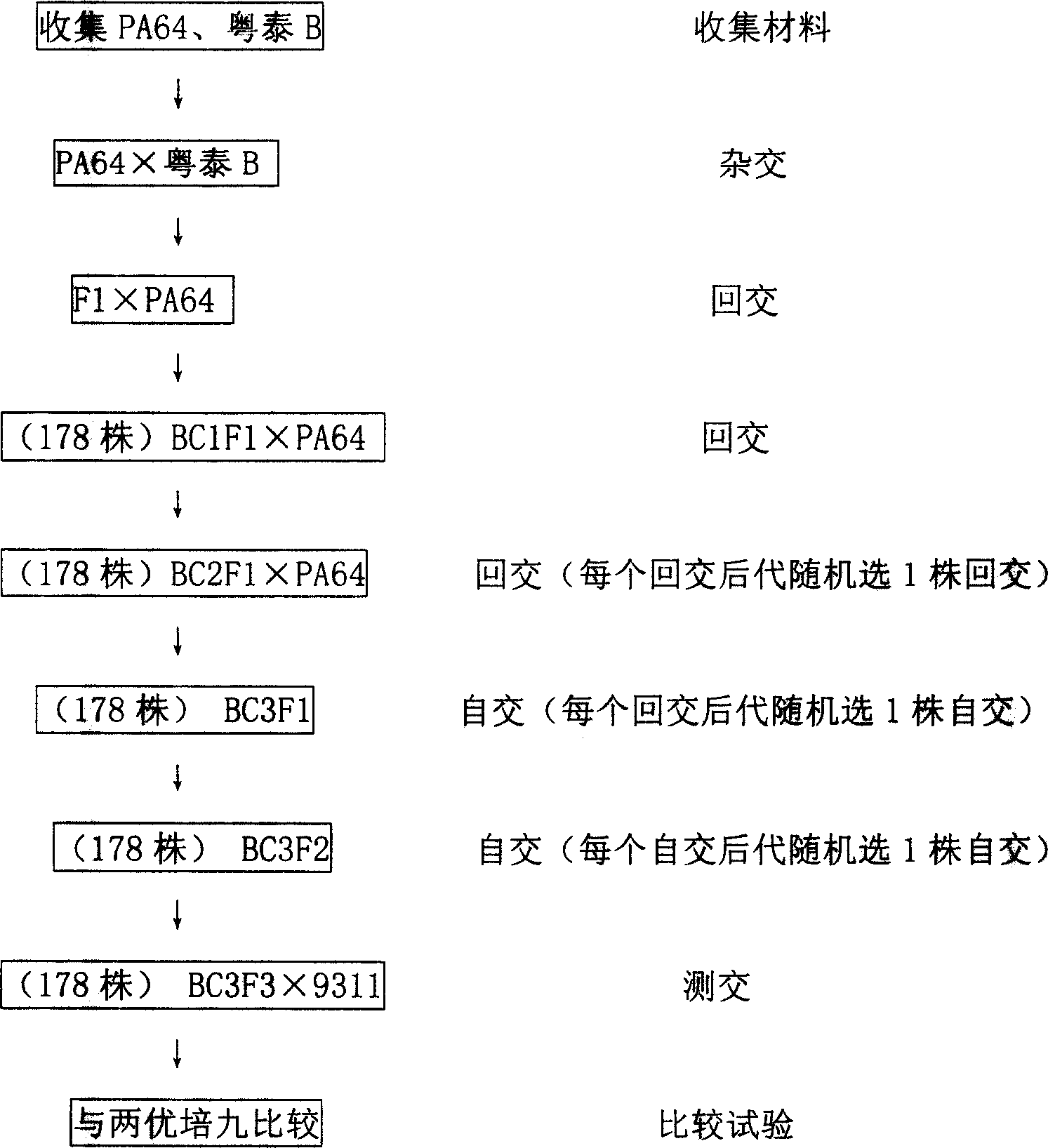Rice heterosis locus polymerizing method
A technology of heterosis and locus, applied in the field of plant genetics, can solve the problems of endangering human health, destroying the ecological environment, aggravating the damage of diseases and insects, etc., and achieve the effect of improving production level, effective experimental results and concise experimental process.
- Summary
- Abstract
- Description
- Claims
- Application Information
AI Technical Summary
Problems solved by technology
Method used
Image
Examples
Embodiment Construction
[0019] The maintainer lines and their corresponding restorer lines of hybrid combinations Liangyoupeijiu (PA64 / 9311), Shanyou 63 (Zhenshan 97A / Minghui 63) and Honglianyou 6 of the three cytoplasmic types were collected; Zhenshan 97B, Minghui 63, PA64, and Yuetai B were used as donor parents, and PA64, Yuetai B, and 9311 were used as recipient parents to form 5 pairs of hybrid combinations, and 5 hybrid F1 generations were obtained; Continuously backcross the somatic parents to obtain the backcross BC3F1 generation; and then continuously self-cross to obtain the BC3F3 generation. A total of 748 materials were obtained, and an average of about 150 materials were obtained for each combination. The BC3F3 generation materials of two combinations (PA64 as the donor parent and Yuetai B as the recipient parent, Yuetai B as the donor parent and PA64 as the recipient parent) were testcrossed with the restorer line 9311, and the offspring of the testcross Compared with the control Liang...
PUM
 Login to View More
Login to View More Abstract
Description
Claims
Application Information
 Login to View More
Login to View More - R&D
- Intellectual Property
- Life Sciences
- Materials
- Tech Scout
- Unparalleled Data Quality
- Higher Quality Content
- 60% Fewer Hallucinations
Browse by: Latest US Patents, China's latest patents, Technical Efficacy Thesaurus, Application Domain, Technology Topic, Popular Technical Reports.
© 2025 PatSnap. All rights reserved.Legal|Privacy policy|Modern Slavery Act Transparency Statement|Sitemap|About US| Contact US: help@patsnap.com

